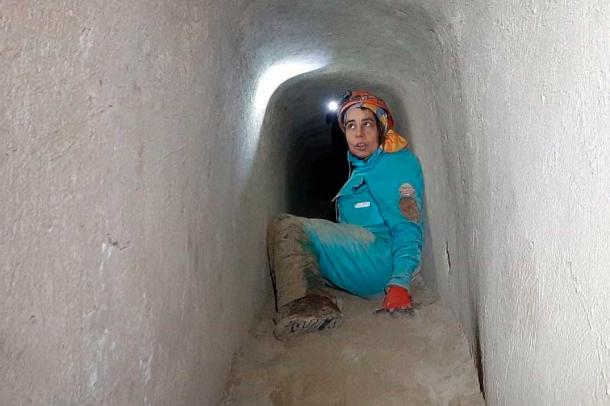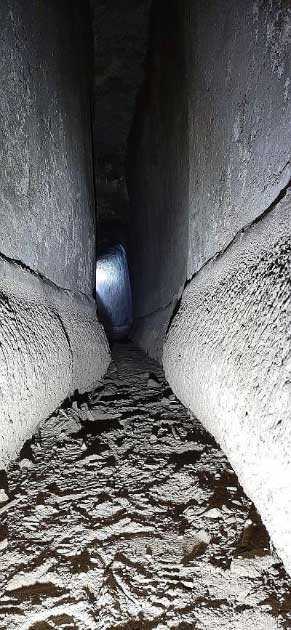
Uncharted Section of Augustan Aqueduct Discovered Beneath Naples
Built in the early first century BC during the Augustan era in Naples, Italy, the “Aqua Augusta” is one of the largest and most sophisticated aqueducts in the Roman Empire. Now, a previously unknown section of the ‘Aqua Augusta’ aqueduct has elicited excitement from both archaeologists and historians.
The Aqua Augusta supplied potable drinking water from the Serino springs at the Campanian Apennines, which is the main spring area of the karst aquifer in the Terminio massif (Southern Italy). Despite its historical significance, the Aqua Augusta remains one of the least researched and comprehended aqueducts from the Roman era. And as such, the lost tunnel has hit today’s headlines.
- 6 Ways Roman Engineers Were Way Ahead of Their Time
- Naples’ Hidden Ancient Aqueducts Could Save the City from Unbearable Heat
The Longest Stretch of the Aqua Augusta
Constructed by Marcus Vipsanius Agrippa, a close friend and son-in-law of the Roman emperor Augustus, the Aqua Augusta measures around 90 miles (145 kms) and it was the longest aqueduct in the Roman world for over 400 years. Running from the Posillipo hill, an affluent residential quarter of Naples, to the crescent-shaped island of Nisida, the rediscovered section of the Aqua August is approximately 640 meters (2,100 ft) in length, representing the longest known stretch discovered to date.
Despite its historical importance, until now the Aqua Augusta had received limited attention from researchers. The newfound segment of the Aqua Augusta, however, was identified by the Cocceius Association, a non-profit group specializing in speleo-archaeological work, the Extraordinary Commissioner for the Reclamation of Bagnoli, and Invitalia.

Speleologists explore the Aqua Augusta, a Roman aqueduct that was previously the least-documented aqueduct in the Roman world. (Associazione Cocceius)
Truths Buried in Myths
The discovery of this stretch of the Aqua Augusta came from a series of stories from local residents who claimed they had explored the tunnels as children. These reports had always been written off as mythical, but now, according to a report in Arkeonews, the discovery “highlights the significance of preserving local knowledge and folklore,” as well as the role of community engagement in the discovery and preservation of ancient sites.
The Aqua Augusta comprised ten branches of water which supplied urban centers and wealthy villas with water. The newly discovered section of the Aqua Augusta is described as being in “excellent” condition compared with the many crumbling underground water tunnels in Italy. And for this reason, the newly discovered section offers archaeologists the opportunity to study what is one of “the best-preserved” sections of a Roman aqueduct anywhere in Italy.
A Library of Ancient Engineering
The main tunnel measures between 52 cm (20.47 in) and 70 cm (27.55 in) wide, and is 64 cm (25.19 in) high. It has a hydraulic plaster coating covered by a thick layer of limestone at the base of the piers. As a result of surveying errors Agrippa's builders failed to follow the most direct path, and the main tunnel hit some obstacles along its course. However, the entire length of the aqueduct is accessible and every section displays a host of ancient engineering techniques.
- Aquincum: Exploring the Ancient Roman City Under Modern-day Budapest
- A Succinct Timeline of Roman Emperors—400 Years of Power Condensed

View inside the newly rediscovered section of the Aqua Augusta. (Scintilena)
The uncovering of this new segment of the Aqua Augusta not only offers insights into ancient Roman engineering and construction techniques, but it also information on the cultural and social significance of the aqueduct, and its role in the everyday lives of the ancient Roman people.
This discovery serves not only as a reminder of the value of local stories, but also the importance of preserving and protecting our cultural heritage, as well as the role of community engagement in the discovery and protection of ancient sites.
Top Image: Speleologists explore the Aqua Augusta, a Roman aqueduct that was previously the least-documented aqueduct in the Roman world. Source: Associazione Cocceius
By Ashley Cowie















